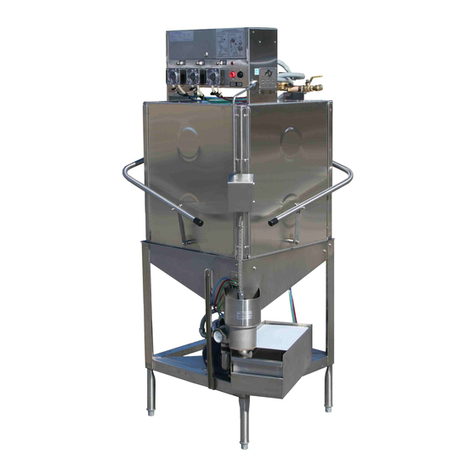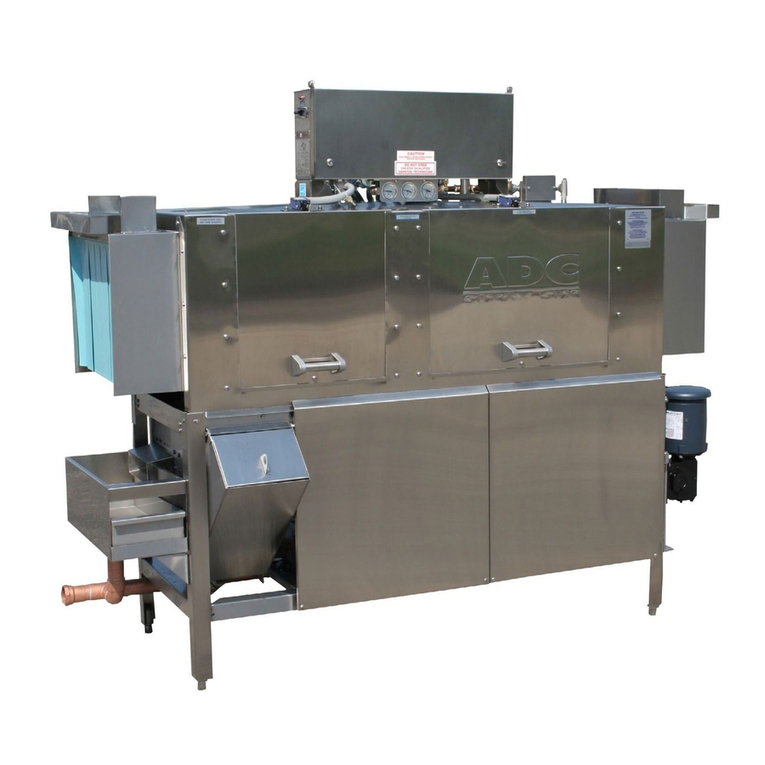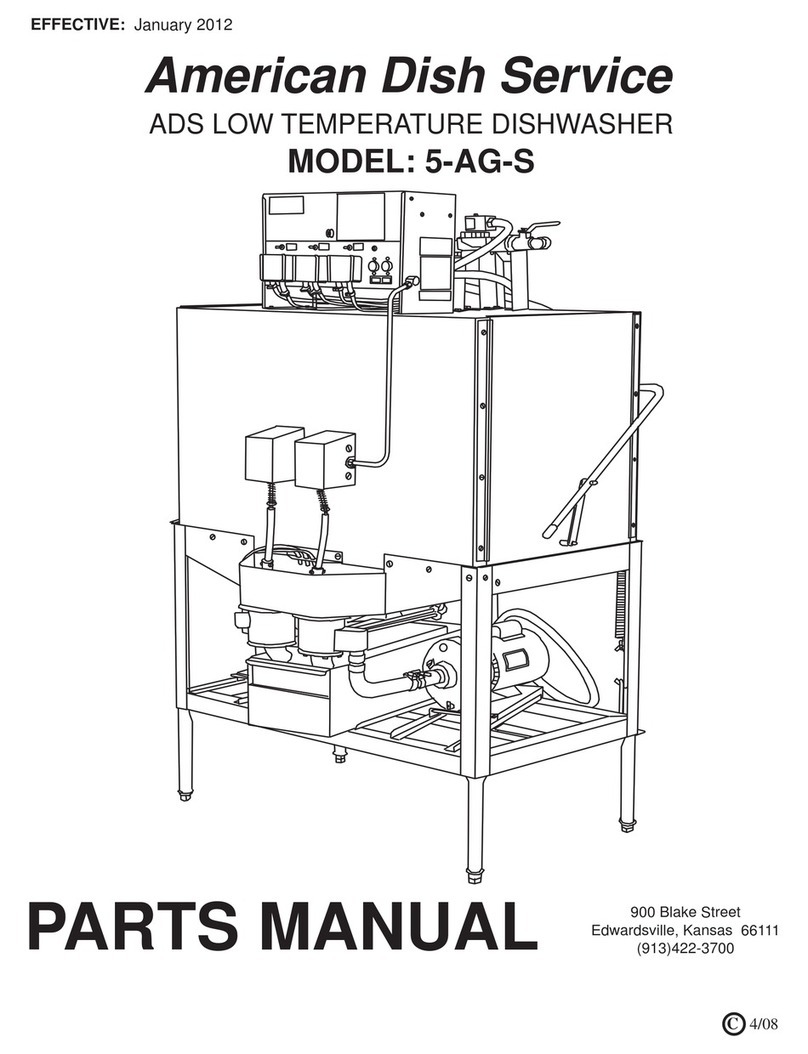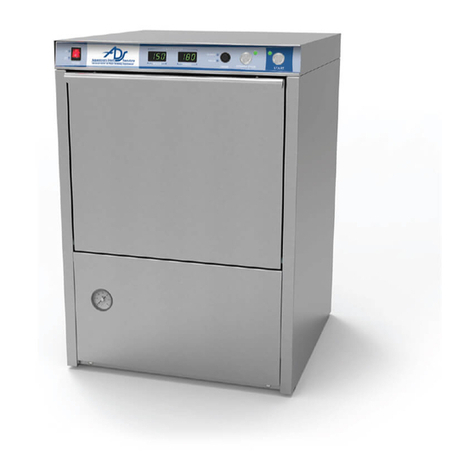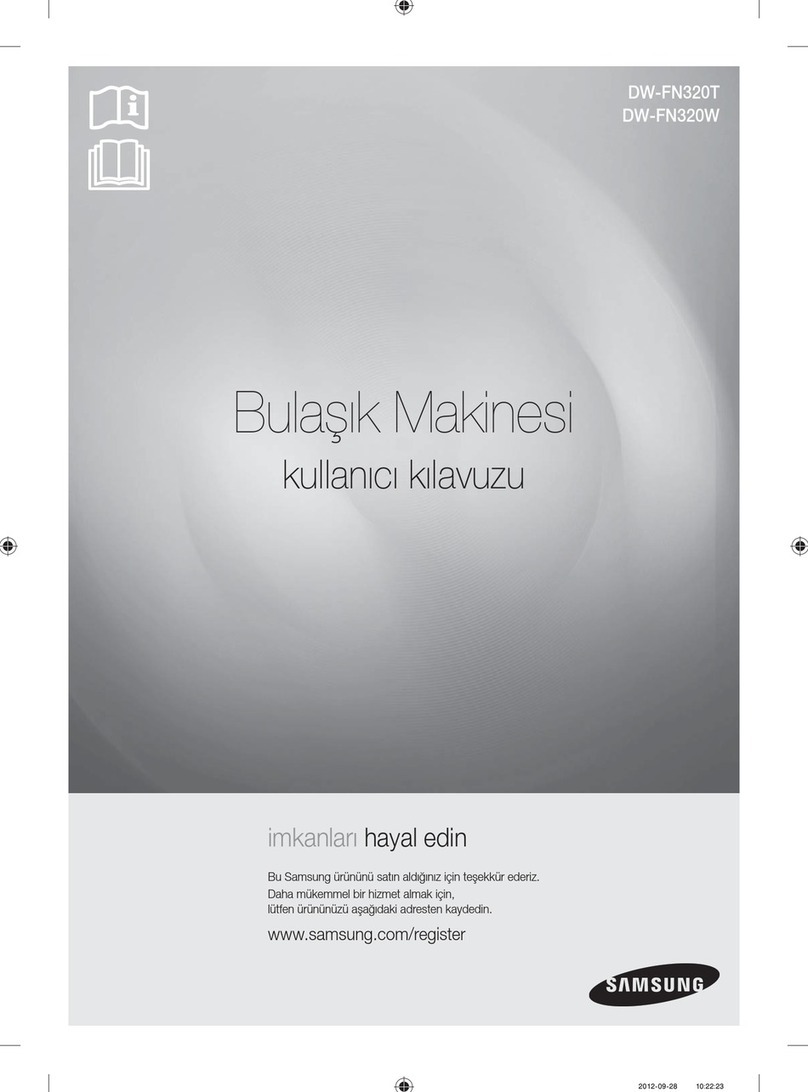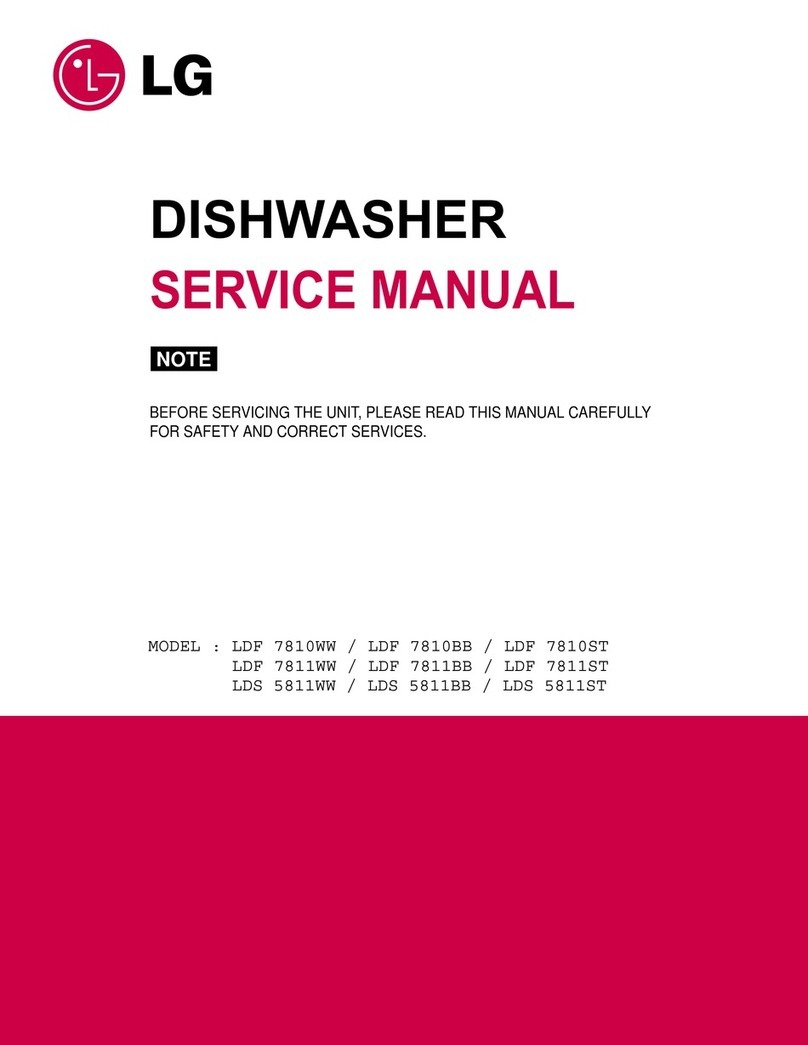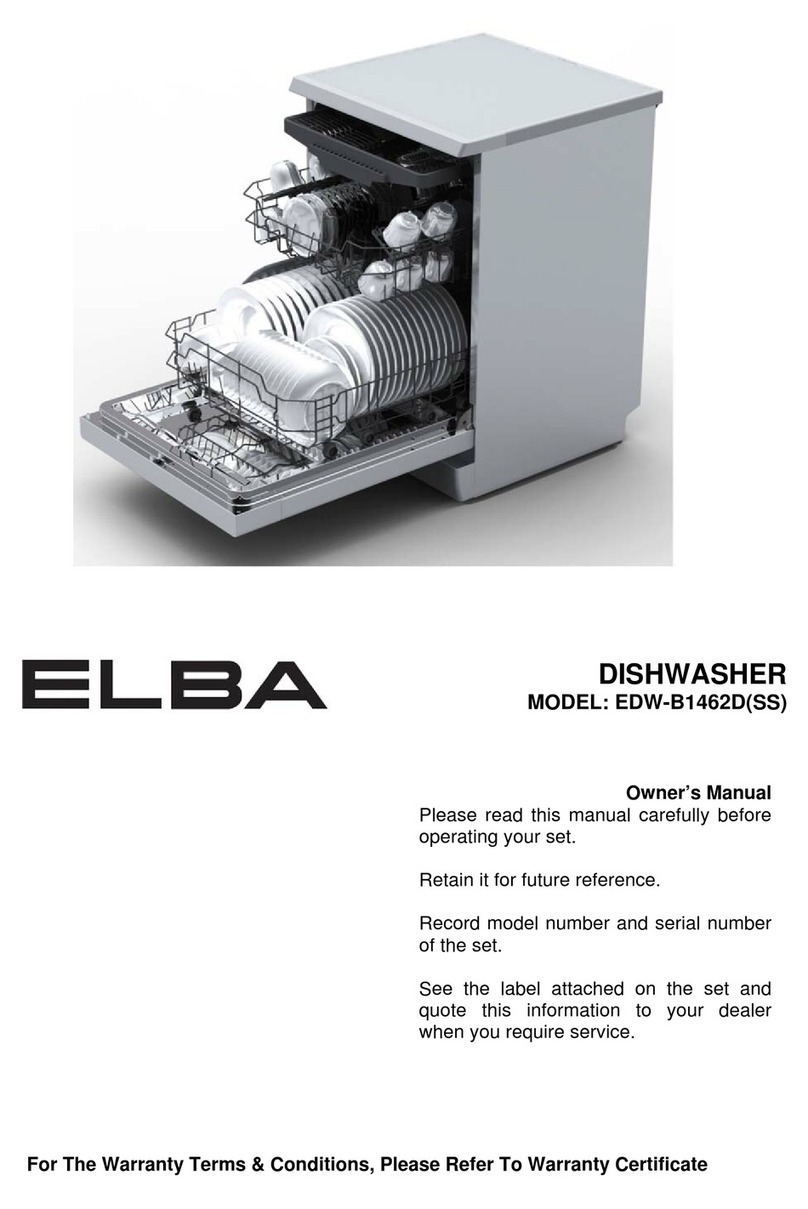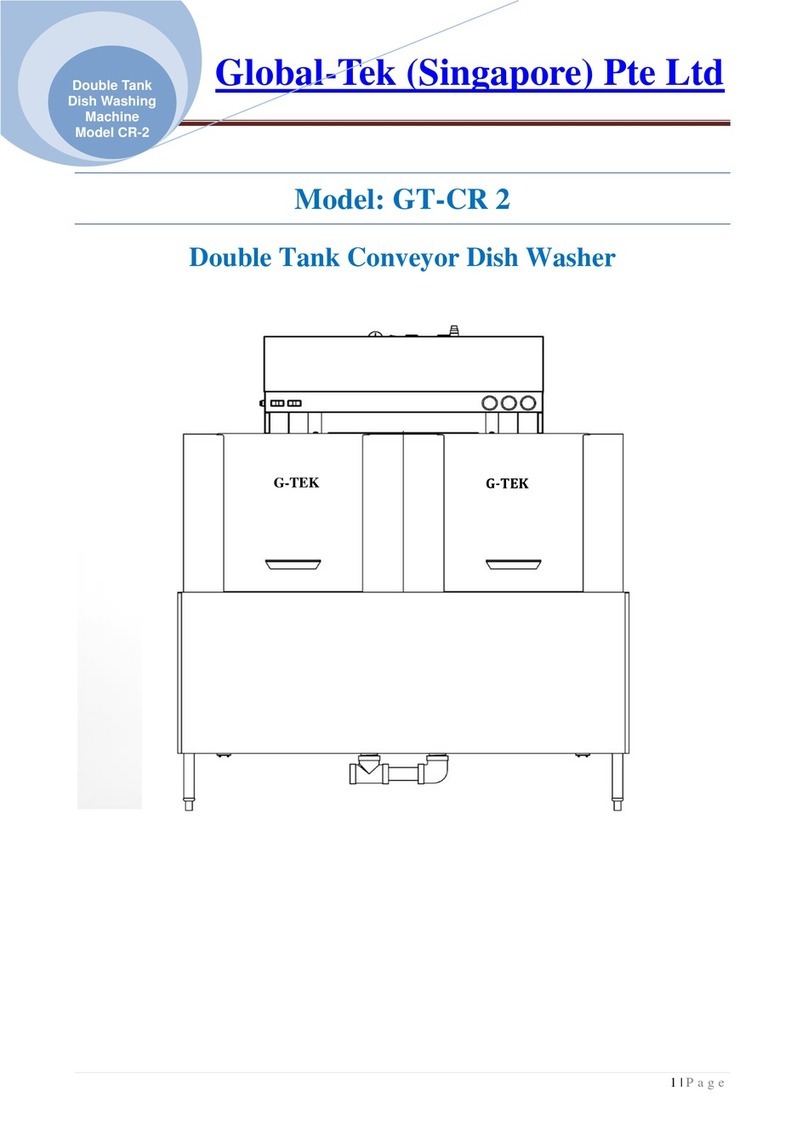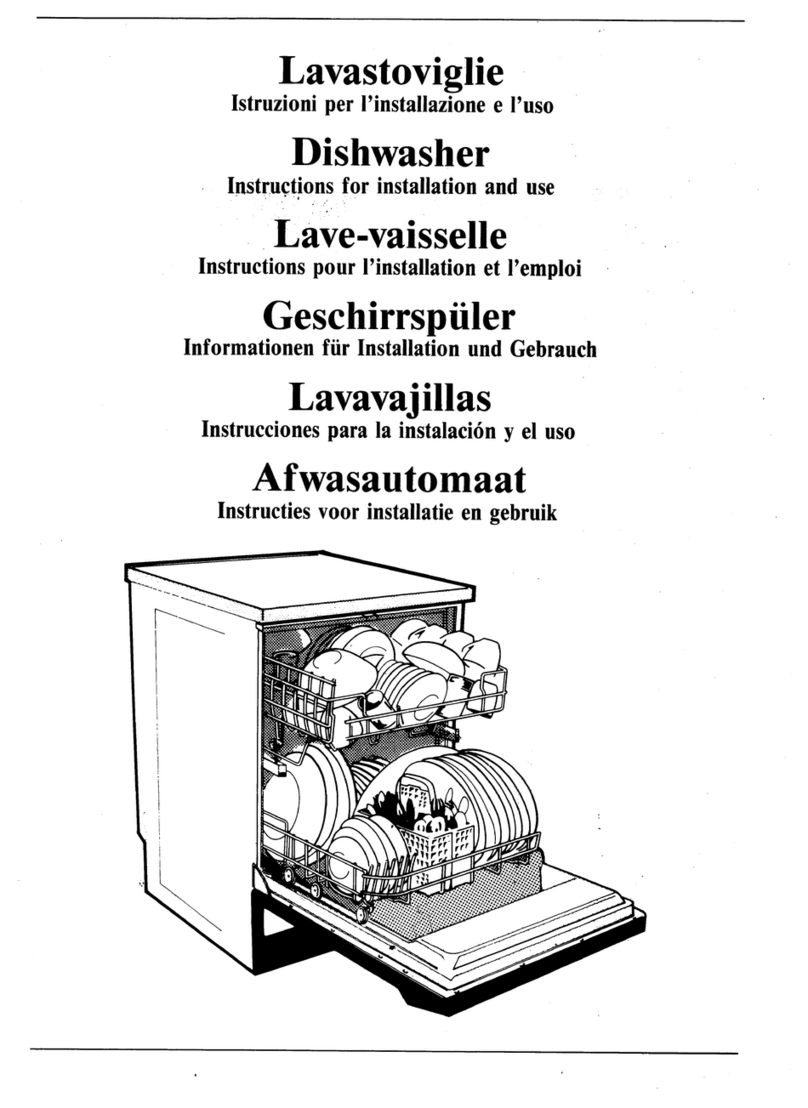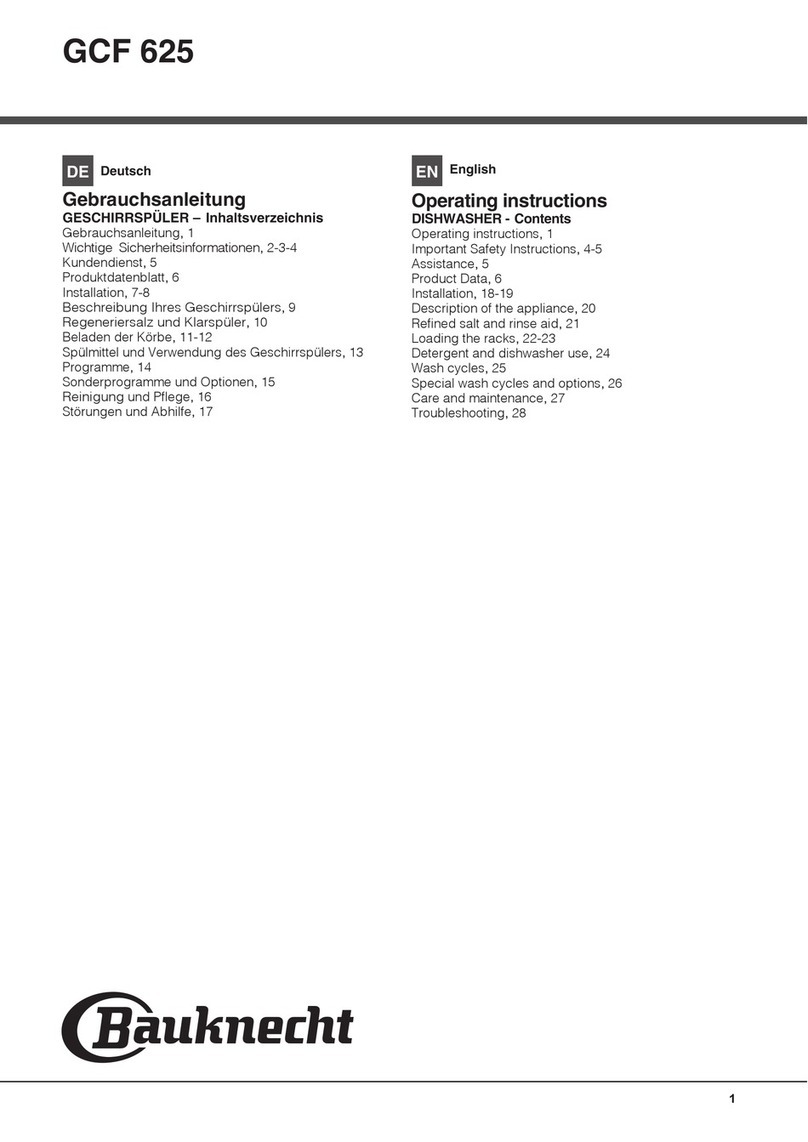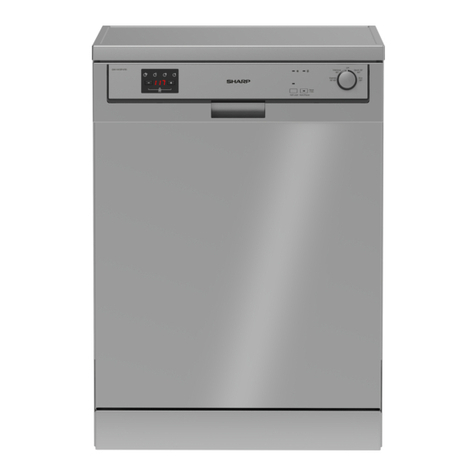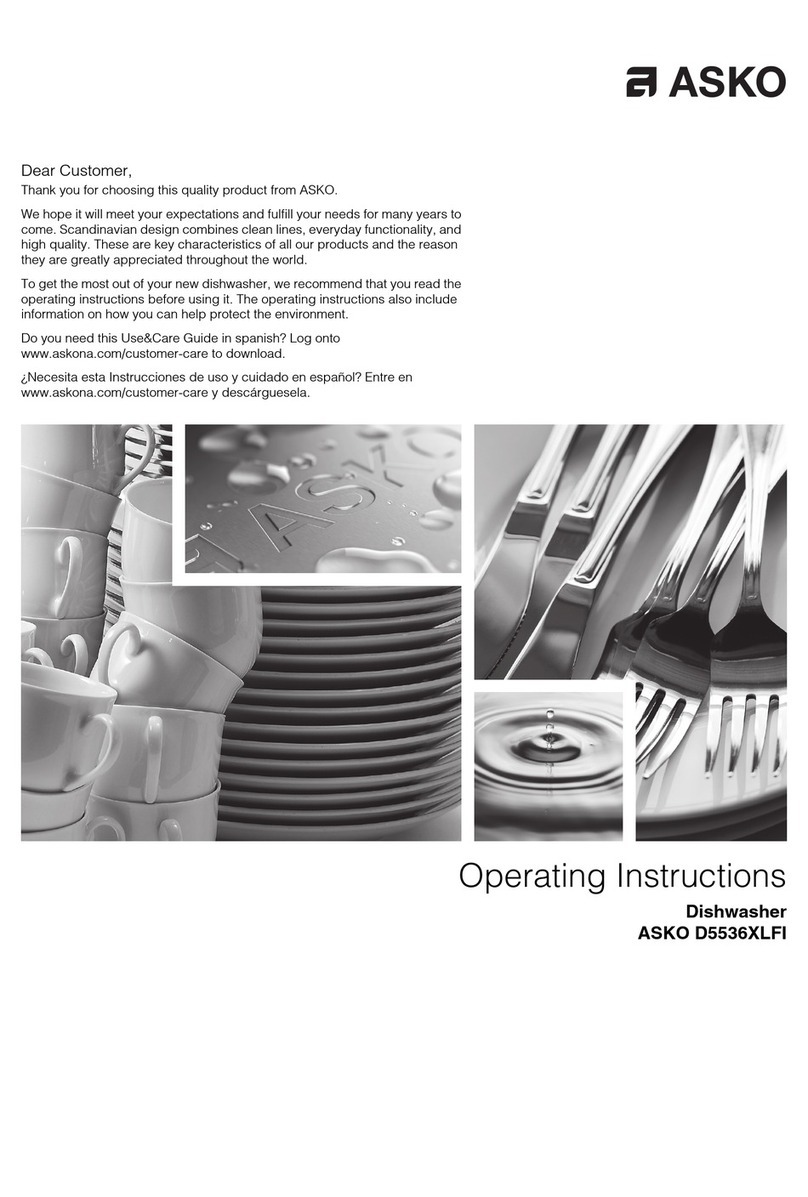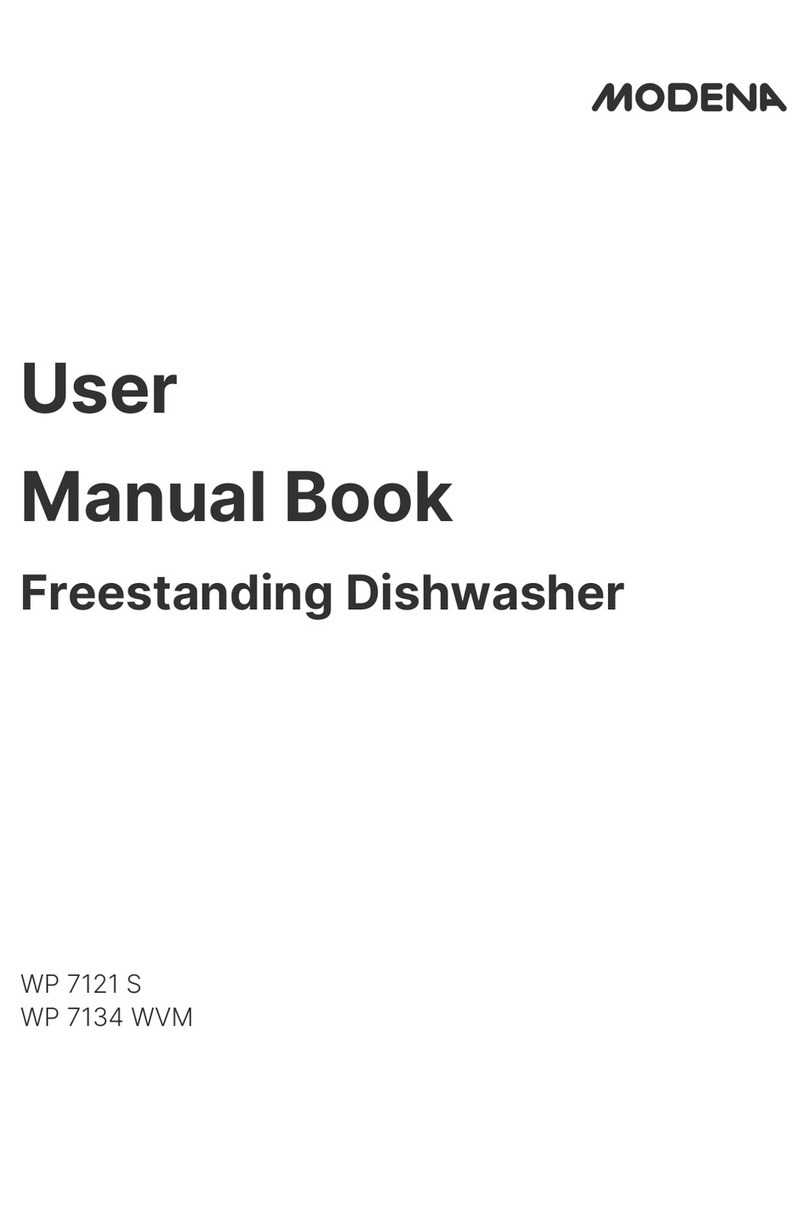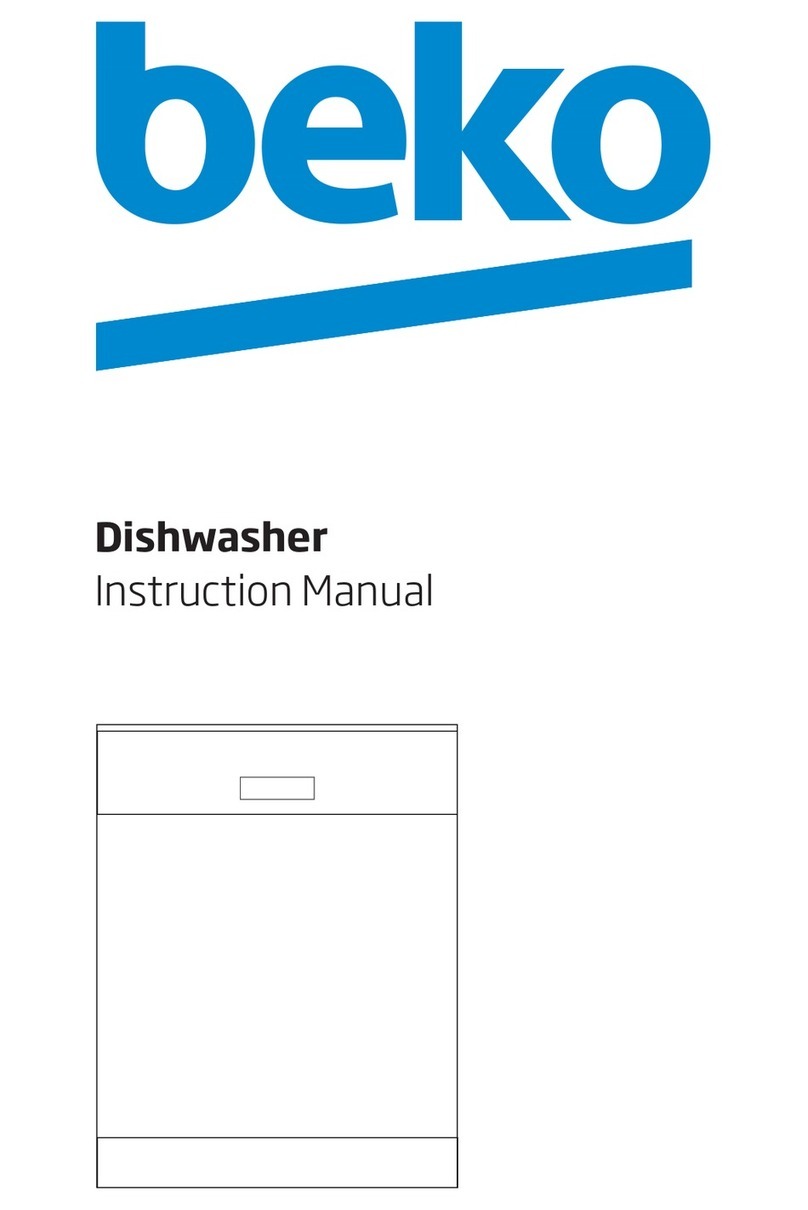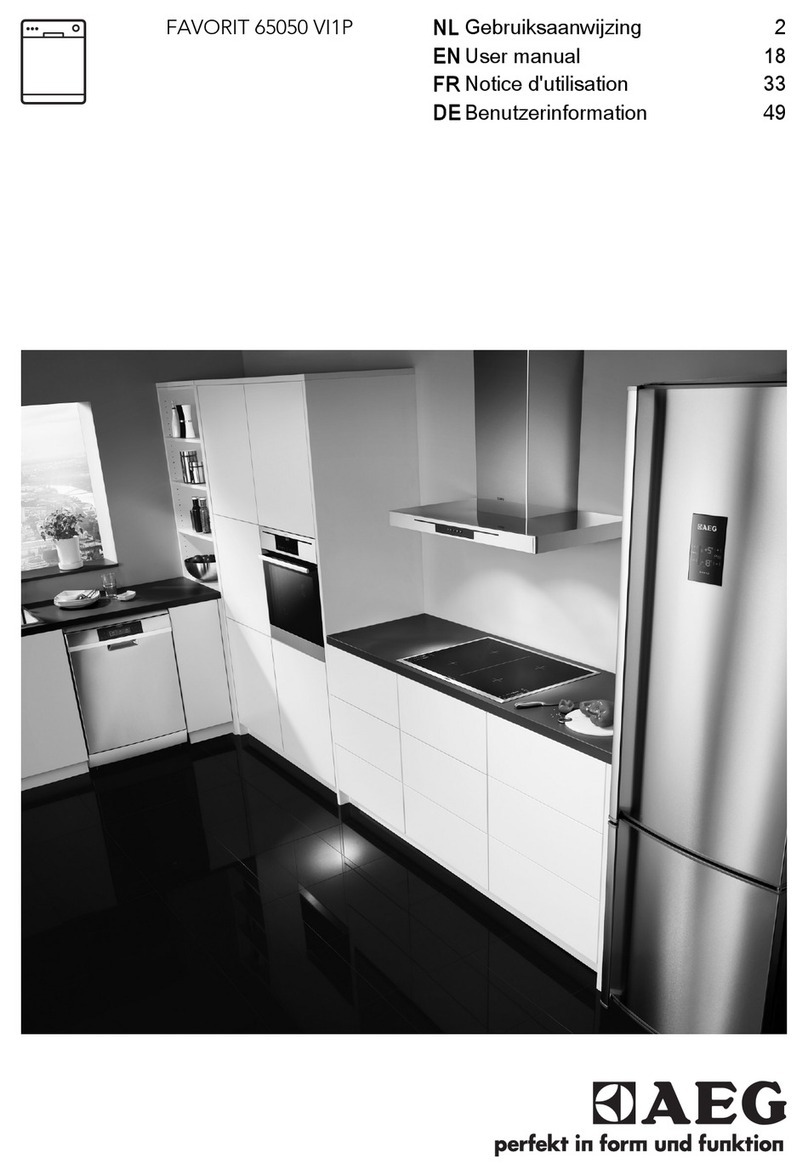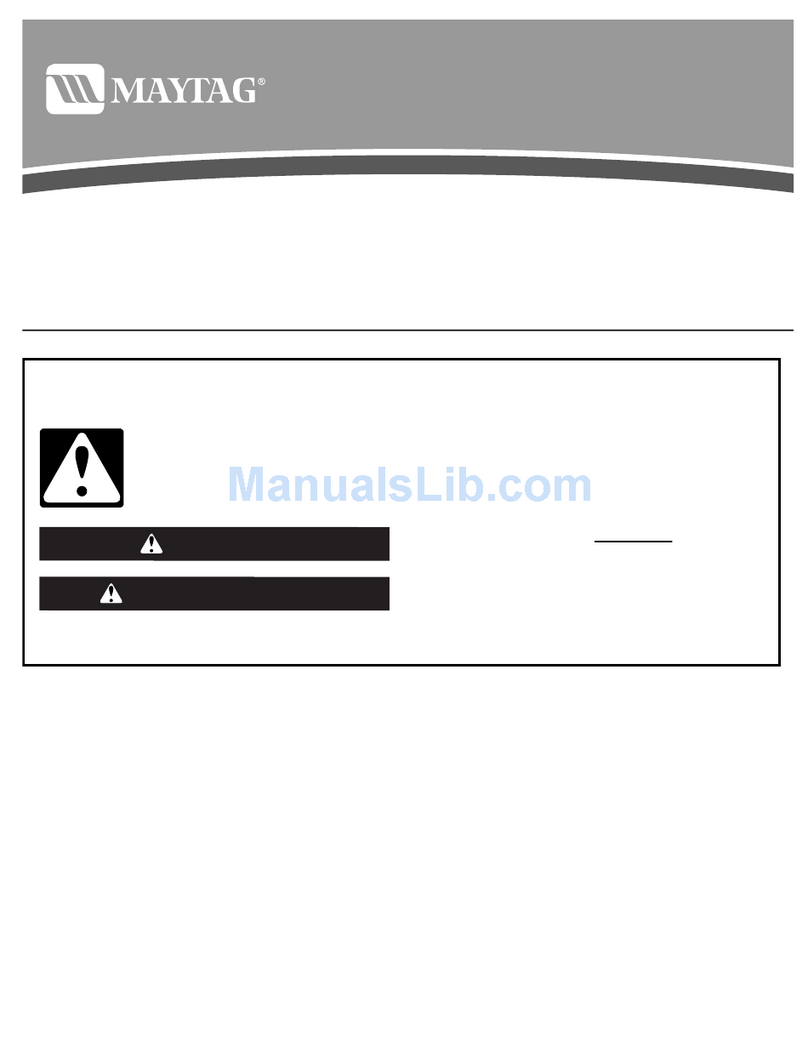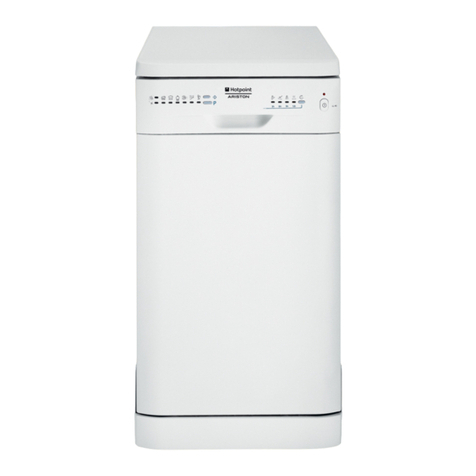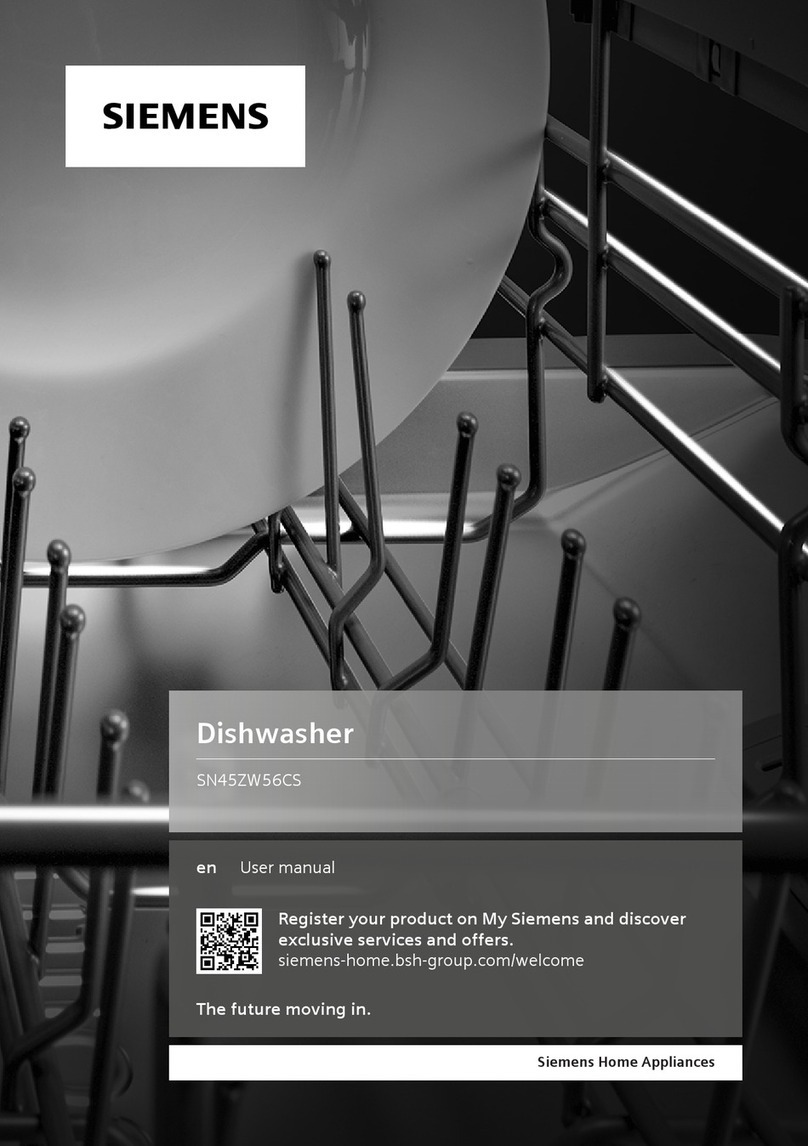
cap and running water through the arm. The bearing can be disassembled for cleaning
with a screwdriver, should the need arise. It is not anticipated that disassembly would be
required; each time the machine goes into final rinse, a jet of water cleans out the bearing
shell. The wash base has a dome, which is held by the final rinse tube. This dome controls
the direction of water being pumped into the spray base. WARNING: Should metal installa-
tion materials become lodged between the dome and the hub, the wash arms will stop turn-
ing. Metal shavings, and especially sand can score these parts and cause rotation problems
for the wash arm. However, once these construction materials are gone, the hub and dome
interface will process food-related soils.
The final rinse arms are interchangeable and rotate on a bushing pivot. The pivot is
hollow and supplies the final rinse water to the rotating arm. There is a twist grip attached to
the top of the pivot by means of a snap ring. There are two washers made of polymer ma-
terial, which serve as the rotational bushings for the rinse arm. After the wash arm is set in
place over the spray base dome, the final rinse pivot, holding the spray arm, can be screwed
into the final rinse tube which holds down the wash dome (There is a hole through the wash
arm bearing shells, the pivot goes through that hole and holds the wash arm in place along
with securing the final rinse pivot).
AFTER THE INSTALLATION CHECK-UP
1. Check rotation of the Wash motor—see arrow on pump housing. There is a 50% chance
that a 3 Phase motor will turn the right direction on installation. If you need to reverse
rotation, change the incoming L1 wire with the incoming L2 wire. Single phase machines
do not need this procedure.
2. Check for a high leg (delta system, 240v), if a high leg is present (200v) use L3 on the
power distribution block for that leg.
3. Check the heater circuit breaker located in the control box; make certain it is in the “on”
position. The toggle should be up.
4. Check the water level control mechanism located at the machine’s right rear top of cabi-
net. Take the cover off the box and inspect the movement of the lever and rod. They
should be free moving and without restriction. When the machine is turned on, the water
control will fill automatically to the upper limit of the control. It is normal for the water level
to be below the scrap trays after initial fill. Several cycles later the machine will begin
to overflow into the scrap trap mounted on the side. SERVICE NOTE: to test the water
control system, turn the machine on and let it fill completely. Then move the lever in the
water level box up with your finger, it should begin to fill but shut off as soon as you take
your finger away. Do this rapidly 10 or 20 times, it should never stick on or continue to fill.
If it does, the problem will be caused
by something rubbing on the rod, lever, or weight. In rare cases, the water level switch
may have lost the required tension on its return button, and must be replaced. These
switches are specifically designed with a certain tension on the button (marked with a 5);
other switches will not work in this system.
Check the machine’s operation by placing a rack inside, close the door and push the start
button located on either side of the control box. The indicator
8
